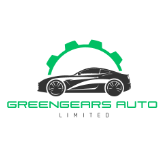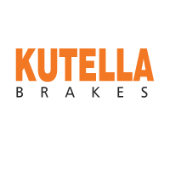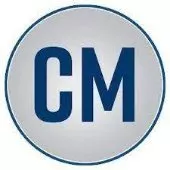-
Welcome to Auto Parts Forum
Whether you are a veteran automotive parts guru or just someone looking for some quick auto parts advice, register today and start a new topic in our forum. Registration is free and you can even sign up with social network platforms such as Facebook, X, and LinkedIn.
GENUINE OEM TOYOTA 2007-2020 Tundra 2008-2020 Sequoia Front Brake Pads & Rotors
-
Similar Content
-
Unlocking Savings and Sustainability: Used Toyota Parts from GreenGears Auto Limited
- toyota
- used parts
- (and 1 more)
- 0 replies
- 343 views
-
Explore Top-Quality Brake Pads for Toyota Models at Our Factory!
By garryhe,
- toyotabrakepads
- toyotacorollabrakepads
- (and 1 more)
- 0 replies
- 585 views
-
- 2 replies
- 1,208 views
-
- 2 replies
- 892 views
-
- 4 replies
- 3,202 views
-
-
Similar Topics
-
By APF
When selecting parts for a car repair, it pays to know the differences between original and aftermarket parts. Whenever possible, get estimates for both.
Choosing between original and aftermarket car parts — and even used parts of either type — is all about squaring your priorities with your budget.
You’ll have different options depending on the part and the shop. And the best choice will depend on whether you’re trying to keep repairs cheap, restore your car’s appearance after a wreck or soup up your ride.
» SIGN UP: link hidden, please login to view
Before we get into that, here are the key differences:
Original equipment manufacturer (OEM) parts match those that came with your car, and are of the same quality as its original parts. They’re also the most expensive. Aftermarket parts are cheaper, and made by other manufacturers — often several, giving you more options. Used parts may have a bit of wear and tear, but should be inspected or rebuilt to ensure they’ll work. These are the cheapest option. Choosing between aftermarket and OEM parts
Your decision will depend on the type of repair and the quality and price of the parts. Always look for parts that come with a warranty, even if they’re OEM, so you’ll be protected in case they fail.
Auto body repairs
Some aftermarket parts may be OK for
link hidden, please login to view, but others won’t be as good, says Michael Calkins, manager of technical services at AAA. “There’s a lot of variation in quality.” For example, he says, aftermarket parts often don’t have the same level of rustproofing as original parts, fit and finish don’t match, or panels don’t align properly. If OEM parts are used in auto body repair, the car should look and work exactly as it did before the damage, because everything will match up. OEM parts are also crash-tested, unlike many aftermarket parts.
Aftermarket parts come at varying price points and levels of quality, but because they are cheaper, insurance companies often prefer them. If you want OEM parts but are dealing with an insurer that wants the shop to use aftermarket parts, ask to pay the difference.
“There’s also the option of used parts, depending on the age of the vehicle,” Calkins says. “It may be cheaper than an aftermarket part but still have all of the original quality.”
Mechanical repairs
A used part, whether it’s OEM or aftermarket, can really save money on repairs under the hood, so long as it’s inspected first and warrantied. And some aftermarket companies reverse-engineer their products to be even better than OEM versions.
For example, many car buffs will tell you that you can get heavy-duty shocks and struts or brake pads that are made of stronger materials. Scan some reviews online, or talk with your mechanic if you’re not sure whether an aftermarket part could be an upgrade.
Adding some extras
If you’d like to modify your ride by adding something like a backup camera or back-seat TV screen, you’ll probably be looking for aftermarket parts. Certain aftermarket upgrades could increase
link hidden, please login to view. This is especially true for improvements like a better sound system or alloy wheels, rather than mechanical repairs. Who provides OEM or aftermarket parts?
The options you’ll have for parts depends on the nature of the repairs and what type of shop you take your car to:
Dealership repair shops will offer only OEM parts — they have no reason to offer a cheaper product from a competitor link hidden, please login to view may be able to offer you a choice between OEM and aftermarket parts Independent garages that specialize in your type of vehicle will likely have both, but with quicker access to OEM parts, including used OEM parts, which can really save you Auto body shops can offer both, but if your collision repair is part of an insurance claim, the insurer will likely prefer aftermarket parts to save money Depending on the job, the cost of OEM versus aftermarket parts varies. Whenever you’re given the choice, ask to see estimates for both so you can weigh your options.
Source:
link hidden, please login to view -
By LEarn492
Hi i have a 2006 g35x that i just got. i put sport pads in the front becuase i used them on my old car and loved the extra power that they gave me. i need new rear pads too, my question is will putting sport pads in the rear mess up my car's handling or braking? like it won't mess with the brake bias, the system that alters brake pressure to each wheel, make my car more likely to fishtail or anything like that when i hit the brakes in a corner right? it'll just give me more stopping power? i'm thinking this as all the companies sell sport pads for rear too. anyone here done this before? any tips? thanks. -
By Counterman
Standard Motor Products (SMP) announced new additions to its electronic parking brake actuator program. The company said the parking brake actuator is one of the fastest-growing categories in the automotive aftermarket. Standard offers coverage for both import and domestic vehicles.
Automakers now use electronic parking brake actuators on almost all new vehicles. These have replaced manually operated cable parking brakes. The new parking brake actuator plays a critical role in vehicle safety systems, according to SMP.
SMP: Quality Engineering in Every Parking Brake Actuator
Standard said its parking brake actuators are always 100% new and never remanufactured. They are engineered to match OE performance. These actuators integrate seamlessly with electronic safety systems.
The plug-and-play design simplifies installation. Technicians do not need additional programming. Many actuators also include the correct O-ring and hardware for a complete repair.
New Applications Cover Ford, Jeep, Subaru and More
link hidden, please login to view has introduced new applications for millions of late-model vehicles. Coverage now includes Ford models like the 2023–22 Escape, Bronco Sport, and Maverick. SMP also added the 2024–23 Super Duty trucks. Other new applications include the 2024–22 Jeep Grand Cherokee and Ram ProMaster. Mercedes-Benz vehicles through 2023 and Subaru models through 2024 are now covered.
SMP expanded its program to include additional Mazda, Audi, Volkswagen and General Motors vehicles.
SMP Supports Distributors with Training and Tools
“Standard’s parking brake actuator program is the most comprehensive in the industry,” said John Herc, vice president of vehicle control marketing at
link hidden, please login to view. “In addition to industry-leading coverage, we are providing our distribution partners with training, marketing materials and key category insights to help them capitalize on the growth of this category.” Actuator Catalog Available Online
Standard lists all parking brake actuators in its online catalog at
link hidden, please login to view. The company also supplies listings through electronic catalog providers. The post
link hidden, please login to view appeared first on link hidden, please login to view.
link hidden, please login to view -
-
By Counterman
Motorcar Parts of America (MPA) announced the company has expanded its product coverage programs for starters and alternators, brake calipers, brake pads and brake rotors, with more than 120 new part numbers covering an additional 30 million vehicles in operation.
The new part numbers are offered through QB, Quality-Built, Quality-Built Black Series and Pure Energy brands powered by MPA, which serve the professional installer market. A select list of late model part number introductions is available via the link below. A complete list is available by contacting a
link hidden, please login to view sales representative. “Our Quality-Built and Pure Energy products continue to gain traction in the professional market and the new part number introductions highlight our ongoing commitment to proactively develop, catalog, and distribute products to meet the demand,” said Jamie Cook, senior vice president of sales and marketing for Motorcar Parts of America.
link hidden, please login to view The post
link hidden, please login to view appeared first on link hidden, please login to view.
link hidden, please login to view
-







Recommended Posts
Join the conversation
You can post now and register later. If you have an account, sign in now to post with your account.
Note: Your post will require moderator approval before it will be visible.